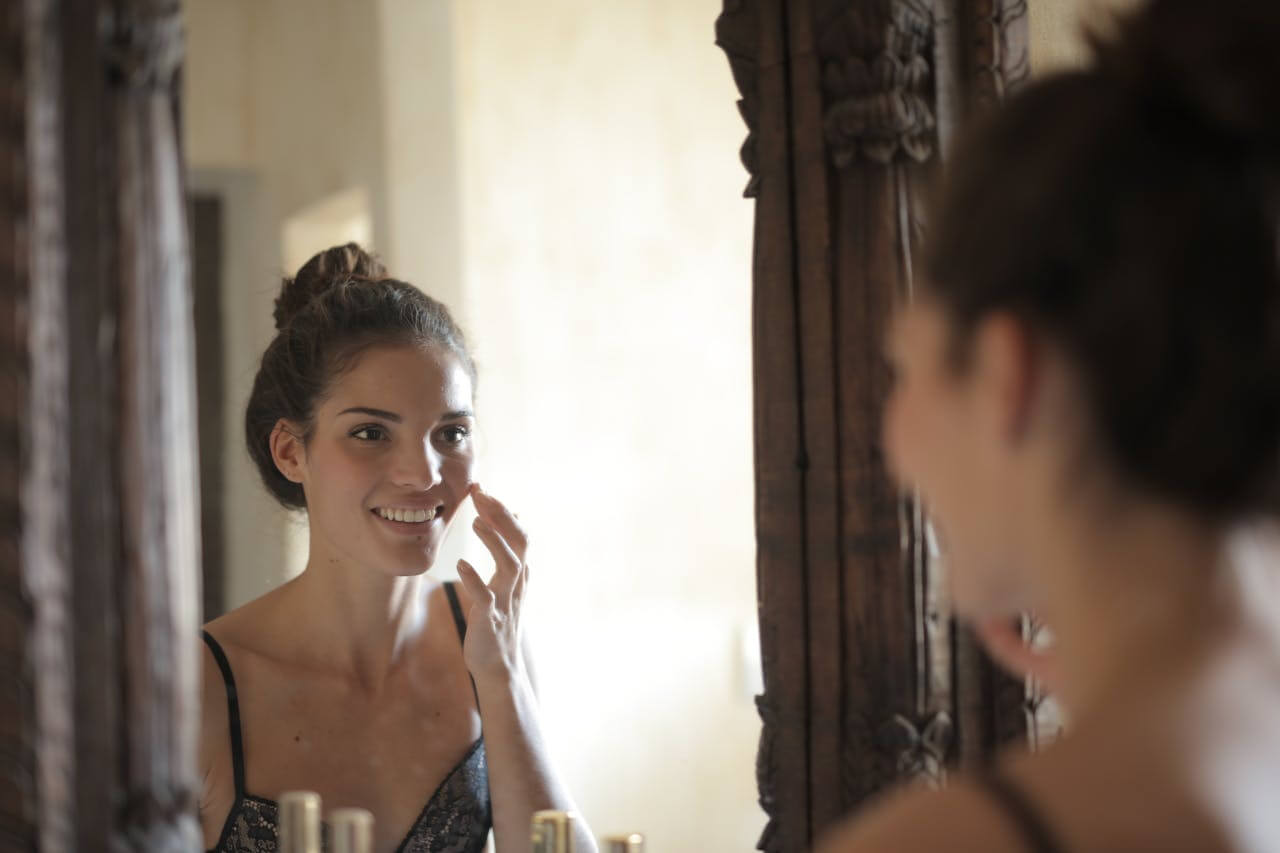How to Accept Life and Be Happy
Even though it may seem on social media that some of your friends or acquaintances live perfect lives, it’s not true. They just post the awesome moments to Instagram and keep the problems close to the chest. Yes, we all have our temporary challenges and problems to solve, and nobody’s life is perfect. Of course, we can do our best to overcome any challenges that may come our way, but what we cannot change, we must accept. Therefore, one of the key things to learn is how to accept life and be happy. In this article, we’ll explore exactly how to do that. Let’s start with a story.

The Potter’s Wisdom
Once upon a time, there lived a skilled potter who crafted beautiful earthen pots. His business thrived, but he faced a persistent problem – customers complained that his pots broke too easily. One day, exhausted by the constant complaints, he prayed earnestly to the goddess for help. When she appeared before him, he pleaded, “Please make my pots unbreakable so my customers will stop complaining.” The goddess granted his wish and vanished.
From that day forward, every pot the potter created became indestructible. The complaints ceased immediately, and the potter felt relieved. However, something unexpected happened. Customers stopped purchasing new pots because their old ones never broke or showed any signs of damage. The potter’s business began to crumble. Desperate, he prayed to the goddess once more, “Mother, forgive me. Please make the pots as they were before. I tried to go against nature, but I was wrong.” The goddess heard his humble prayer and restored the pots to their original, breakable state. Soon, the potter’s business flourished as it had before.
This ancient tale teaches us a profound lesson about how to accept life and be happy. Sometimes the very imperfections we resist are essential to the natural flow of life. Understanding how to accept life and be happy begins with recognizing that fighting against life’s natural rhythms creates more problems than it solves. The key to happiness lies in accepting life’s imperfections rather than constantly battling against them. Let’s dive into how to accept life as it is and how to accept what you cannot change.
What Is Acceptance?
The potter’s story beautifully illustrates what happens when we fight against life’s natural order. Acceptance represents one of the most powerful approaches to discovering how to be happy. It stands as one of the eight pillars of joy identified by the Dalai Lama and Archbishop Desmond Tutu in their profound teachings on sustainable happiness.
Acceptance is the ability to embrace life in all its complexity – the pain alongside the beauty, the uncertainty mixed with moments of clarity, the imperfections that make everything real. When you learn to accept life as it is and discover how to accept what you cannot change, you’re not approving of everything that happens or resigning yourself to misery. You can still work diligently to improve situations while accepting the current reality.
Acceptance Is Not Resignation
Think of acceptance as making peace with your present circumstances while maintaining hope for the future. It’s choosing a positive attitude even when facing challenges. Understanding how to accept life as it is means releasing your internal resistance to what already exists, which only creates additional suffering. You can still try to change the situation, but it’s impossible to succeed by denying what exists. Acceptance is the only place from which change can begin.
The Buddhist teaching captures this wisdom: “If something can be done about the situation, what need is there for dejection? And if nothing can be done about it, what use is there for being dejected?” This compassionate wisdom shows us how to be happy even in difficult circumstances.

The Importance and Benefits of Acceptance
Many people wonder how to be happy when life feels challenging. The answer often lies in acceptance. When we resist our circumstances, we create a second layer of suffering on top of the original difficulty. Imagine getting caught in quicksand. If you thrash around and fight against it, you sink deeper and faster. But if you stop resisting and remain still, you can find ways to escape.
Why Expectations Create Suffering
Our expectations about how things should be create tremendous stress and anxiety. We develop mental pictures of perfect scenarios, ideal relationships, flawless careers, and problem-free lives. When reality doesn’t match these expectations, we suffer. This gap between expectation and reality becomes a breeding ground for disappointment, frustration, and unhappiness. Learning how to accept what you cannot change frees us from this exhausting cycle.
The Transformative Power of Acceptance
When you learn to accept what is, you conserve energy previously wasted on resistance. This energy becomes available for creative problem-solving and genuine change. Acceptance also enables forgiveness – of ourselves, others, and circumstances. It allows us to heal from past wounds instead of wishing for a different history that can never exist.
Research in positive psychology consistently shows that acceptance leads to reduced anxiety, lower stress levels, improved relationships, and greater overall life satisfaction. People who practice acceptance report feeling more at peace, even when external circumstances remain challenging. This is the essence of how to accept life and be happy – making peace with what is while working toward what could be.

This Week’s Challenge: How to Cultivate Acceptance
This week presents an opportunity to transform your relationship with life through acceptance. The challenge is simple but profound: cultivate acceptance in every area where you notice resistance. This doesn’t happen overnight, but with consistent practice, you’ll discover how to accept life as it is while maintaining your capacity for positive change.
Make an effort to improve any negative situation you may have; otherwise, accept the situation, your limitations, and life just as it is. Let go of any expectations and do your best to accept your circumstances, your past, and the people in your life without judgment or resistance, which only ever makes things worse. Remember, happiness is accepting life exactly as it is. This week’s practice will teach you how to accept what you cannot change while maximizing your impact on what you can change.
“If something can be done about the situation, what need is there for dejection? And if nothing can be done about it, what use is there for being dejected?” – Buddhist

How to Cultivate Acceptance: Three Essential Exercises
Exercise 1: Distinguishing Between Action and Acceptance
Begin by examining your current life circumstances with honest clarity. Make a genuine effort to improve any negative situation you face. If you’re unhappy at work, explore possibilities for change. Update your resume, have conversations with your supervisor, or develop new skills. If a relationship feels strained, initiate open communication. Taking action where possible is essential to understanding how to be happy.
However, some situations resist our efforts at change. Perhaps you’ve tried everything possible, or the matter lies outside your control. This is where learning to accept what you cannot change becomes essential. Accept your limitations without harsh self-judgment. Accept life just as it is in this moment, knowing that this acceptance doesn’t prevent future change.
Let go of expectations about how things should be. Instead, do your best to accept your circumstances, your past, and the people in your life without judgment or resistance. Both judgment and resistance intensify suffering without solving anything. This practice reveals how to accept life and be happy by releasing what we cannot control.
Exercise 2: Mapping Your Control and Influence
This exercise helps you distinguish between what requires action and what requires acceptance. Choose a challenging or frustrating situation you’re currently facing. It might be a difficult coworker, financial pressure, a health concern, or a relationship issue.
Step 1: Identify elements within your control or subject to your influence. Write these down specifically. For example, if you’re dealing with financial stress, you control your spending habits, whether you seek additional income sources, and how you educate yourself about money management.
Step 2: Recognize elements beyond your control that require acceptance. You cannot control the overall economy, your past financial mistakes, or other people’s financial decisions. Write these down with the same specificity. This step teaches you how to accept what you cannot change with clarity and precision.
Step 3: Create a detailed list of intentional steps to improve the situation based on what you control or influence. Then consciously accept everything else on your list. This might sound like: “I cannot change the economy, but I accept that reality and will focus my energy on what I can change.”
This exercise reveals how to accept life as it is while maximizing your impact. It transforms vague anxiety into clear action plans and conscious acceptance, showing you practical steps for how to be happy through intentional living.
Exercise 3: Focusing Your Energy Wisely
We are incredibly powerful beings capable of experiencing and accomplishing remarkable things. Yet we cannot change everything we’d want to change. Many of us waste enormous amounts of time and energy trying to change other people and situations that are completely outside our control. We attempt to change our partner’s personality, our parents’ opinions, or our friends’ life choices.
Here’s a crucial insight: How to accept life and be happy often depends on where you direct your energy. That which you cannot change will bother you far more if you’re dissatisfied with things you actually can change. When you neglect areas within your control while obsessing over uncontrollable matters, you create a double burden.
The goal must be to focus on everything in and around you that you can genuinely change and accept everything that you cannot change. This doesn’t mean you stop caring about larger issues or other people. It means you invest your limited energy where it produces actual results. Understanding how to accept what you cannot change liberates tremendous energy for positive action.
Consider relationships. You cannot change another person’s behavior, values, or choices. You can only change your own responses, boundaries, and decisions about the relationship. When you learn to accept this reality, you stop the exhausting cycle of trying to control others and start experiencing genuine peace.

How to Accept Yourself: The Foundation of All Acceptance
Before you can truly learn to accept yourself, you must recognize that self-rejection is one of the deepest sources of suffering. Many of us carry harsh negative beliefs about ourselves, such as “I’m not good enough,” “I’m too sensitive,” “I always fail,” or “Something is fundamentally wrong with me.” These beliefs create constant internal conflict and prevent genuine happiness. Understanding how to accept yourself is essential to discovering how to be happy in all areas of life.
Exercise 1: Learn to Accept Yourself by Transforming Self-Limiting Beliefs
Take out paper and write down all the negative beliefs you hold about yourself and about life. Don’t censor yourself. Instead, let everything surface. You might write beliefs like “I’m not smart enough to succeed,” “Life is always hard for me,” “I don’t deserve love,” or “I’ll never overcome my past mistakes.”
Now comes the transformative part. Challenge each belief. Ask yourself: Is this absolutely true? Where did this belief come from? Does it serve me, or does it limit me? Often, you’ll discover these beliefs originated from childhood experiences, past failures, or other people’s opinions, not from objective reality.
Next, practice acceptance of these beliefs and yourself despite them. This might sound like: “I’ve carried the belief that I’m not good enough, and I accept that this belief exists within me. I also accept myself completely, with this belief and despite it.” This is the essence of how to accept yourself – embracing your whole self, including the parts that feel flawed.
Transform your negative beliefs into positive affirmations. “I’m not smart enough” becomes “I am intelligent and capable of learning whatever I need to know.” “Life is always hard” transforms into “Life brings both challenges and opportunities, and I handle both with grace.” Repeat these affirmations daily, especially when old patterns surface.
Finally, create a list of everything you love about yourself. Include physical qualities, personality traits, accomplishments, and ways you’ve shown up for others. Read this list every day, preferably in the morning. This practice of learning to accept yourself rewires your brain toward self-compassion and shows you how to accept yourself more fully each day.
Exercise 2: Learn to Accept Yourself by Belonging Without Abandoning Yourself
We all possess a natural desire to belong. This desire is healthy and human. The problem arises when we want to belong to something (a group, relationship, family system, or organization) that requires us to abandon our authentic selves. When the price of belonging is giving up who you truly are, the cost is far too high.
Consider whether you’ve ever changed your opinions, hidden your interests, or suppressed your personality to fit in. Many people spend decades living this way, only to discover they’ve lost connection with their true selves. The relief of belonging gets overshadowed by the pain of self-betrayal. This is why learning to accept yourself matters so deeply: it prevents you from sacrificing your authenticity for false belonging.
You should remain true to yourself because you are invaluable. Your unique combination of experiences, perspectives, talents, and quirks exists nowhere else in the universe. When you learn to accept yourself fully, you naturally attract relationships and communities where you can belong while remaining authentic.
This doesn’t mean you never compromise or consider others’ feelings. It means you don’t fundamentally alter your values, suppress your needs, or pretend to be someone you’re not just to gain acceptance. Real belonging happens when people accept the real you, not a carefully edited version designed to please others. Understanding how to accept yourself completely transforms your relationships and your life.
If you’re struggling with persistent limiting beliefs or finding it difficult to learn to accept yourself, working with a professional through positive psychotherapy can help boost your well-being sustainably while you navigate the journey toward self-acceptance.

Conclusion: Your Journey Toward Acceptance and Happiness
The potter in our opening story discovered what wise people throughout history have known: fighting against life’s natural imperfections creates more problems than it solves. How to accept life and be happy isn’t about achieving a perfect existence. It’s about making peace with an imperfect one while still working toward positive change. The key to happiness lies in accepting life’s imperfections, your own limitations, and the beautiful reality of being human.
This week, commit to cultivating acceptance in your daily life. Use the exercises provided to distinguish between what you can change and what requires acceptance. Challenge your negative self-beliefs and learn to accept yourself with all your beautiful imperfections. Focus your energy where it creates real results, and release your grip on what lies beyond your control.
Friendly Reminders
Remember that acceptance is a practice, not a destination. Some days will feel easier than others. On difficult days, return to the Buddhist wisdom: If something can be done, do it without dejection. If nothing can be done, release the dejection. This simple teaching encapsulates everything about how to accept life as it is and how to be happy regardless of circumstances.
As you learn to accept life as it is, you’ll discover a profound paradox: acceptance doesn’t limit your potential for change and growth. Instead, it creates the stable foundation from which all meaningful transformation begins. By accepting yourself, your circumstances, and the present moment, you free yourself to experience genuine joy – not despite life’s imperfections, but because you’ve made peace with them.
The path of learning how to accept life and be happy doesn’t require a perfect life. It requires accepting the life you have while taking conscious action toward the life you want. Both elements matter equally – acceptance and action, peace and progress. When you truly understand how to accept yourself and how to accept life as it is, happiness becomes not a distant goal but a present reality.
Start today. Choose one area where you’ve been resisting reality, and practice acceptance. Notice how this releases energy and opens possibilities. This is how to accept life and be happy – one conscious choice at a time, one moment of acceptance building upon another, until acceptance becomes your natural way of meeting whatever life brings.

Resources
The information in this article is grounded in scientific research. If you’re interested in specific studies, feel free to reach out to us.
For daily doses of joy, positivity, inspiration, and motivation, be sure to follow us on Instagram.
Za naše bralce v Sloveniji
Če vas zanima več o psihoterapiji in iskanju trajne sreče, preberite naslednje članke: Psihoterapija Obala, 5 ključev do trajne sreče in notranjega miru, Najboljši psihoterapevti v Sloveniji: Kako se hitro spopasti s stresom, Psiholog v Kopru: Kako odpraviti težave s psihoterapijo in RTT terapijo, in Psihoterapija Online: Prednosti in učinkovitost terapije na daljavo.


